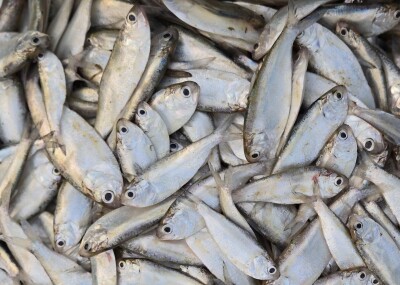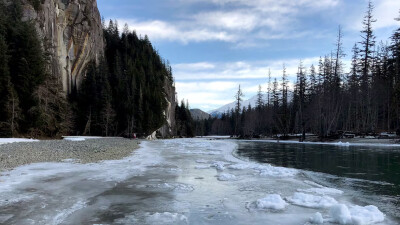ATY Northeast
Canadian shop comes to Maine; a boatbuilding tradition carries on
Cory Guimond of Millennium Marine in Escuminac, New Brunswick, appears to be on schedule to open a new boatshop this summer. No, it won't be in Canada. Guimond is bringing his fiberglass Millennium Marine designs over the border to Eastport, Maine, which is just about as far as you can go to the East and still be in the United States.
Guimond isn't sure what name will be on the front of the new boatshop — Eastport Marine and Eastport Boats are at the top of the list — but whatever the name, "everything completed for the United States market will be assembled in the states, and we won't have to deal with the Jones Act," he says. The Jones Act, otherwise known as the Merchant Marine Act of 1920, limits the carrying capacity of a boat built outside the United States that can be fished in this country.
Millennium Marine in Escuminac will continue to build boats for Canadian fishermen.
Guimond is the first Canadian in recent times to cross the border to build boats for American fishermen. Though in the early 1900s when sardines were running hard in Passamaquoddy and Cobscook bays, at least one Canadian builder crossed over from Deer Island, set up his molds on the American shore and started building wooden sardine carriers.
Guimond has "heard from several U.S. fishermen that are basically ready to buy as soon as I get there." While he was waiting for a building site to be finished, Millennium Marine was working on two lobster and herring boats for Canadian fishermen. A 45' x 16' crabber, scalloper and lobster boat, the High Voltage, was launched in early April for a Cape Breton, Nova Scotia, fisherman. The boat has a 625-hp Iveco.
Almost 200 miles down the Maine coast from Eastport, a Northern Bay 38 was launched from Dana's Boat Shop on Westport Island. The lobster boat was for Steve Peaslee, who is from nearby Damariscotta and is the son-in-law of the boatshop's owner, Dana Faulkingham. The 38' x 13' hull was built at General Marine in Biddeford, Maine, and designed by Spencer Lincoln in Brooklin, Maine.
With limited horsepower — a 335-hp John Deere — Faulkingham says he was "trying to keep it light." So Faulkingham laid up composite panels for the deck and the wheelhouse. Aft of the engine the deck is 1-inch Nida-Core glassed on both sides. The foredeck is also Nida-Core while the split wheelhouse is Divinycell composite construction.
"The engine stringers are pretty much the only wood in the boat," Faulkingham says.
Though Maine's shrimp fishery was very limited this past season, Peaslee is looking ahead to when the fishery picks up, which is why the boat went out of the shop with three shrimp holds beneath the deck. The shrimp will be kept on trays, and Faulkingham figures Peaslee can pack 1,500 pounds in the three holds. Lobster will be kept in tanks on deck. On sea trials the 38-footer hit 22 knots. One-hundred traps can be stacked on deck.
By mid-April, Faulkingham was three weeks into his next project, finishing off a 36-foot Wayne Beal hull for Shawn Murray of Boothbay, Maine.
"I've done all kinds of Calvins, but this is the first Wayne Beal," he says.
Faulkingham hopes to finish the boat by Memorial Day. She'll have a 425-hp John Deere over her engine beds.
In Friendship, Maine, Wesley A. Lash took over Lash Brothers Boat Yard from his father, Winnie, in 1985. On March 25, 2013, Wesley died at home in his sleep. In the 28 years Wesley ran the shop, he completed more than 200 boats; about 50 were wood and the rest fiberglass. That was done when the boatyard's crew wasn't repairing and repowering the local fishing fleets.
Lash's son, Wesley D. Lash, who's worked in the shop for 21 years, is now running the yard. "He wouldn't want me to not continue. He taught me enough to know you still have to work for people," says Lash.
Of course, friends and customers still drop by for the boatshop's coffee breaks. "I'm blessed to be able to work for those guys," says Wesley D. — Michael Crowley
ATY West
Ketchikan project has class; Aleutian longliner gets a twin
The third week in April, the hull for the 136' x 40' x 15' Arctic Prowler was complete, and the crew at Alaska Ship & Drydock in Ketchikan was putting a pair of 1,000-hp MTU diesels in the freezer longliner. The boat is being built for the Alaska Longline Co. in Petersburg.
"In about six weeks, the vessel will be fully assembled, and then it's a matter of fitting and outfitting," says Carl Smith, the boatyard's project manager for the Arctic Prowler. He adds that the Arctic Prowler is "a class vessel, one of the first fishing vessels built to class in a long time." Det Norske Veritas is the classification society involved in the project. Though the Arctic Prowler isn't built to load line requirements, the boat will carry a Plimsoll mark.
Delivery of the Arctic Prowler is scheduled for late June, though that could change, depending on how quickly the yard works out some issues with DNV. "The main issue we are faced with now has to deal with the refrigeration equipment," Smith says, adding, "There's no question the class process is different from what the fishing industry has been accustomed to from previous years."
When the Arctic Prowler is completed, she'll be using the Mustad autoline system to fish for Pacific cod, blackcod and turbot in the Bering Sea and Gulf of Alaska. The fish will be stored in a 16,300-cubic-foot freezer hold.
The Arctic Prowler, which was designed by Seattle's Jensen Maritime Consultants, is the first boat to be built in Alaska Ship & Drydock's new assembly hall. The hall is 100 feet wide, 250 feet long and 175 feet tall, says the boatyard's Doug Ward.
Adjoining the assembly hall is a five-story — two-thirds the height of the hall — production center with specialty shops for boats under construction. A modular fabrication center is under construction at one end of the hall that will allow completed modules to be brought into the assembly area.
Alaska Ship & Drydock's new assembly hall certainly makes it a lot easier and more cost efficient to construct what Ward says is "the first modern steel fishing boat to be built in Alaska."
In 2009, Neil Anderson, along with partners Josh Trosvig and Lenny Herzog built the 58' x 27' Cynosure, a Hockema & Whalen Associates-designed longliner. This year the three partners are back at it, building another 58' x 27' longliner on Seattle's waterfront.
The Cynosure proved successful enough that very few changes have been made to the new boat. If there were any major shortcomings to the Hockema & Whalen design, they wouldn't have taken long to be noticed. That's because the Cynosure spends 10 months of the year longlining for blackcod and halibut, and pot fishing for gray cod to the westward of the Bering Sea's Dutch Harbor, as far down the Aleutian chain as the island of Attu, says Anderson.
One of the changes is an increase in generator power. The Cynosure has 100-, 65- and 30-kW gensets. But the new boat will take advantage of a pair of 200-kW Stamford generators powered with the new Cummins QSB7-DM auxiliary engine. When you fish that far out on the chain, it doesn't hurt to have the redundancy of two gensets.
"They just came out with [the generators]. I got two of the first four shipped to the West Coast," Anderson says. "They have 210-kW prime power and 170-kW continuous." There's also a 40-kW Mitsubishi genset for hotel power.
Along with the generators, the partners upgraded the refrigeration system from 30 to 40 tons. That's enough for a refrigerated seawater system for two fish holds with 3,300 cubic feet. The new boat also has a 350-cubic-foot bait hold that can be flooded. "We are also putting coils in the fish hold for frozen product, and there will be an ice machine on board," Anderson says.
The main engine hasn't changed. It's a 660-hp Cummins QSK-19M.
When the Cynosure was built, Anderson says he thought it would take eight to nine months. It took 18 months. Building started on the new boat March 22, 2012, and Anderson expects it to be completed b
y late June or early July. "So we are getting a little better," he says.
But when asked if there would be a third boat to improve the building cycle even more, Anderson says, "No third one. This is it for sure." — Michael Crowley
ATY South
Florida yard builds freezer trawler; boat built in 1976 to go oystering
The Eastern Shipbuilding Group in Panama City, Fla., signed a contract on March 29 with the O'Hara Corp. of Rockland, Maine, to build the Araho, a 194-foot Det Norske Veritas-classed freezer trawler. It should be completed by mid-2015 and will be fishing on the West Coast.
Skipsteknisk AS of Ålesund, Norway, designed the boat. The hull is shaped to reduce resistance and increase fuel efficiency, says Steve Berthold, at Eastern Shipbuilding Group.
The Araho measures 194' x 49'. For propulsion, it will have a single EMD MEL16-710G7 Tier-3 diesel rated for 4,000 horsepower at 900 rpm. While underway, a 1,700-kW shaft generator will be the primary source for the boat's electrical power.
Secondary power will come from two 550-kW Caterpillar C18 Tier-3 generators. For emergency power a 95-kW Caterpillar C4.4 Tier-3 generator will be available.
Eastern Shipbuilding will install the latest systems for bottom and pelagic trawling. When fish come aboard, they will go into a factory with heading machines, transport systems, fish graders, storage tanks, weighing graders, packing tables, packing machines, an automatic horizontal freezer system and block elevators.
The processing layout and the selection of the equipment for moving and handling the fish were designed to maximize automation while assisting the employees working in the processing area, says Berthold. "This arrangement is designed to achieve very high throughput with minimum fish damage, improve employee efficiency all in a clean, safe work area."
The Araho will have three working cranes. A 360-degree deck crane near the stern with a 6,400-pound capacity will be for fishing operations. Two cranes, one located forward and one amidships, will be for off-loading operations in port.
Moving up to Chesapeake Bay, the era of fiberglass deadrise workboat construction began in 1972 when John Collamore III moved to Deltaville, Va., and started Hulls Unlimited East. About the same time Maurice "Whitey" Laurier, a former assistant director for General Dynamics who worked at its shipyard in Quincy, Mass., moved to Hayes, Va., and opened Glass Marine.
In 1974, Collamore and Laurier teamed up to build traditional-style round-stern fiberglass deadrise workboats. They formed a partnership called Classic Chesapeake Boats to build boats for watermen. They sold a few boats, but by mid-1976 the partnership dissolved, with Collamore and Laurier going their own ways.
One of the 1976-built round-stern boats is being refurbished to work in the revived Chesapeake Bay oyster fishery. In April, Ampro Shipyard in Weems, Va., hauled the 42-foot Belinda Jean for W.E. Kellum of Weems. The seafood company plans to use the boat to harvest oysters on state-leased private oyster grounds.
For the warm-weather months, the U.S. Food and Drug Administration has instituted time and temperature regulations for harvesting oysters on private grounds. Public grounds are normally closed during these months. "With time and temperate harvest regulations, we have a limited time period to harvest our oysters," says Tommy Kellum, the company's president. "We have two boats working, but we need another one."
He says the general revival of the bay's oyster stock is the main reason the company is investing in a third boat. "We have had a tremendous spat set this year all over the Chesapeake Bay. Usually on good years, traditionally we see heavy spat sets in one area or another of the bay, but this year there is an amazing spat set from St. Michaels, [Md.] to James River [at the mouth of the bay]."
Ampro Shipyard and Wave Rider Manufacturing in Topping, Va., are working on the boat. Wave Rider Manufacturing specializes in fiberglass repair and has regelcoated areas of the cabin. Ampro designed and built an aluminum mast and boom, custom fabricated the winder system, and reworked the hydraulics for dual steering stations.
The Belinda Jean also has a new radar and GPS and was repowered at Ampro with a 600-hp Detroit Diesel 892, which gives the 42-footer enough speed to get to the oyster grounds quickly and then back to the unloading dock. — Larry Chowning






